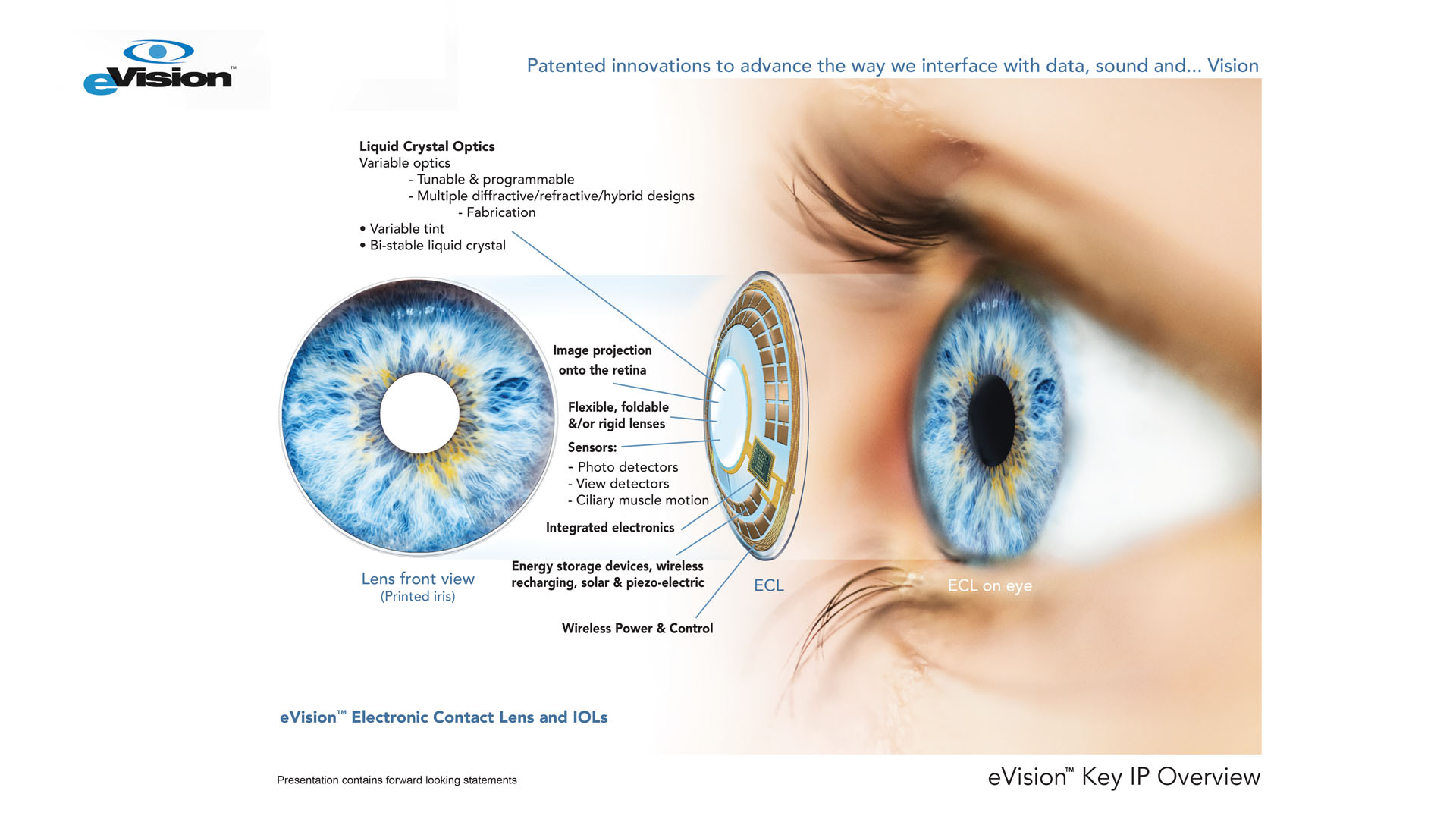

Electronic focusing eyewear, also known as electronically focusing glasses are now a reality here on earth and getting ready for space. Astronauts are experiencing a hyperopic-shift during long-term exposure to microgravity on space flights. NASA and the National Space Biomedical Research Institute (NSBRI) are working to determine the cause of this vision impairment and they issued a grant to e-Vision to develop electronic tunable eyeglasses with lenses that can be reprogramed in-flight in a gravity-free environment, using e-Vision’s Smart Focus Optics technology. Here on earth, Mitsui Chemical Corp., under license from e-Vision, is working to commercialize electronic eyeglasses using e-Vision’s non-tunable, diffractive lens technology, which typically allows only for an on-off approach to seeing near and far. Mitsui Chemical Company has launched a licensed version of this product this year. For information about the product launch please use the attached link.
https://www.mitsuichem.com/en/release/2018/2018_0208.htm
In the next-generation product currently under development, the voltage profile of the electronically-focusing eyeglasses will be determined by the patient’s prescription and different presets can be programmed, with three or four easily-accessible default settings. Contact e-Vision Smart Optics about licensing opportunities available for this exciting new technology.

Electronic Contacts
E-Vision is developing a working prototype of an Electronic Contact Lens (ECL) that can be inserted in the eye, focused and powered wirelessly. The outer layers will be composed of appropriate polymers to allow for oxygen flow and will be invisible to the wearer. The optical portion of the lens is 6 mm and is the thickness of a human hair. The wearer can adjust the focus of the lens through a range of up to four diopters. This four diopters is in addition to the fixed, base optical power established by the wearer’s prescription. Pre-set ranges for far, near and middle-vision can be set and even fine-tuned to the individual’s own needs. For the majority of the population, this will eliminate the need for current treatment options such as multi-focal lenses or mono-vision. Additionally, the lenses can also be made to adjust tint, like sunglasses. Incredibly efficient, unlike early ECL prototypes, e-Vision’s ECL electrical power requirements are lower so they can hold a charge independent of frames or wearable charging stations. The ECL itself will carry its own charge so that usability will be consistent with standard specifications set by the lens manufacturer. Currently, charging will be included as part of the cleaning kit. Future charging techniques being explored include battery, piezo electronics, anatomic charging, or inductive (wireless) charging. If the ECL should lose power or experience a fault, it will simply return to its unaltered optical power with no risk to the wearer.
SID-Society for Information Display Power Point
Developments in Electroactive Lens Technology for Vision Correction
May 2019

